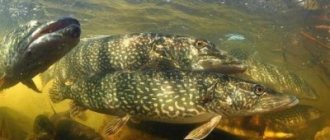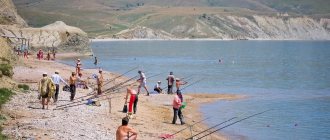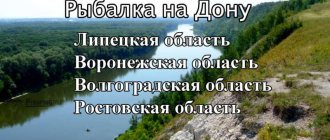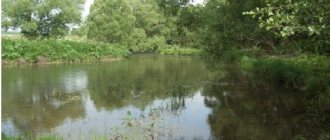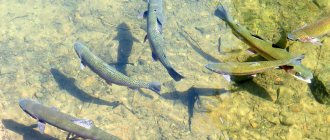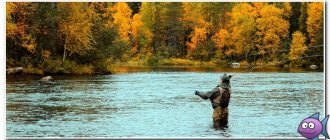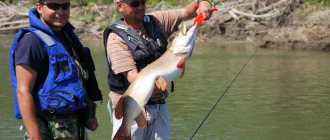List of fishes of Lake Onega
- Sterlet;
- Salmon;
- Trout (three varieties);
- Palia (two varieties);
- Whitefish (nine varieties);
- Vendace (two varieties);
- Pike;
- Grayling;
- Smelt;
- Dace;
- Guster;
- Roach;
- Bream;
- Chekhon;
- Ukleya;
- Catfish;
- Acne;
- Char;
- crucian carp;
- Zander;
- Perch;
- Ruff;
- Ide;
- Onega slingshot;
- Sculpin (two varieties);
- Stickleback (two varieties);
- Burbot (two varieties);
- Lamprey (two varieties).
The most common species are smelt, vendace, whitefish, pike perch, roach, burbot, ruffe, perch, pike, bream, bleak, ide, and dace. Other types of fish are found quite rarely, and some are almost impossible to catch while fishing. Below we will give a description of some behavioral features of the most popular and widespread fish species in Lake Onega.
Whitefish in Lake Onega
As we wrote above, nine species (forms of whitefish) are found in the lake, which can be divided into two large groups: lake and lake-river. All varieties do not differ too much from each other, they are mainly divided by habitat and spawning (Shui whitefish, Yamnaya whitefish, Sung whitefish).
Whitefish are found almost everywhere. The largest form is the pit whitefish, which is worth looking for in deep holes. Often caught in Maloye Onego Bay (a popular fishing spot).
The most common form is the whitefish ludoga, which is found in any part of Lake Onega. This is the one most often caught by fishermen. It stays mostly near the coast. Whitefish in Lake Onega are also of great commercial importance.
Shores of Onego
The shores of Onego are varied: there are sandy beaches, rocky and pebble ones. Rocky ones predominate in the northern and western regions. In the northern part of the lake, the coastline is quite indented: here there are so-called sheep's foreheads (steep, steep banks), many lips, capes and bays.
The outline highlights a series of rocky capes that served as a prehistoric stone book for the ancient people who settled on the shores of the lake. The most famous cape is called Demon Nose, which gave its name to a whole group of petroglyphs found on its eastern coast.
The coast of Onega is mostly elevated, overgrown with dense forest. Only in its southern part the banks are low. Swampy, they flood when the water is high.
The most difficult bottom topography is in the northern part of the lake. There are numerous increases and decreases here. The depth in the central part is 50-60 m, in the southern part it is 20-30 m less, in the northern part it depends on the specific area.
Thanks to the pronounced depressions, the northern part is most suitable for commercial fishing (industrial trawlers are frequent here). Numerous herrings, luds, ridges and ridges covered with silt provide comfortable places for fish to live and, as a result, for fruitful fishing.
Pike in Lake Onega
Pike in Lake Onega are characterized by all the typical habits of this fish. It is worth looking for in shallow coastal zones, especially in shallow bays and in the bays of Svyatukha, Keften, Velikaya, and Chelmuzhskaya. Excellent places for pike fishing are river mouths, especially worth noting are Vytegra, Megra, Vodla, Andoma.
When fishing, you most often come across specimens weighing up to two kilograms, but there are known cases of catching very large pikes, weighing more than 10-12 kilograms. However, such “giants” are found quite rarely, although every angler has a chance to catch such a specimen.
Fishing for burbot in Lake Onega is one of the most exciting times in winter. When this freshwater brother of cod begins to “stir”, and this is the second half of February-early March, many fishermen give up searching for perch and roach and begin to diligently “knock for burbot”.
On the second largest lake - Ladoga - such fishing is not so popular, the burbot is not so large, but on Onego it is very popular among fishermen, because you can catch monsters weighing 10 or even more kilograms.
In fact, active burbot bites on everything. But this does not stop fishermen from inventing new ways to catch it. Burbot is caught with vertical spoons, with balance beams, with “helicopters”, with turntables, with jigs – in general, with everything that moves, plays or even glows.
And yet, in recent years, fishing with a jig (this is a huge hook with a weight) equipped with a piece of smelt has become the most popular. With this same jig, the fisherman, sometimes until he turns blue in the face, knocks on the bottom in anticipation of a bite from a predator. This is where the term “burbot knocking” comes from. I want to talk about one such March fishing trip, because I myself took part in it.
They knocked That morning began still dark. Andrey didn’t want to wake up at any time. It was three o'clock in the morning. After yesterday's birthday, it was hard for Andrei.
Maybe we can go tomorrow? — he sent a message with trembling fingers to his partner Evgeniy. “If you don’t leave in 15 minutes, I’ll go alone to Suisar,” came the menacing answer. “Okay, I’m coming,” Andrey’s trembling fingers sadly went with their owner to the kitchen to pick up a set of thermoses with tea and broth prepared by his smart wife the day before.
The road to the fishing Mecca - Shcheleyki (there is such a village in the Leningrad region on the bank of Onego near the Karelian border), and the fishermen were going exactly there, was sleepy and long. Let's go. They were silent. They were silent and drove on. The speed was low, the road was winter, the car was with a trailer in which the snowmobile was sleeping. Sleep fell not only on the equipment and Andrey, but also on Evgeny.
- How about we come to Shcheleyki and sleep in the car for a couple of hours? - Andrei suggested. “If you sleep, then somewhere on the highway,” Evgeniy remarked reasonably. “Imagine what the fishermen passing by will think about us.” So they will say: “We came fishing with a snowmobile to sleep. There are people...”
They didn't sleep. But, having arrived at the parking lot, they were in no hurry to get out of the car. The drowsiness did not leave them.
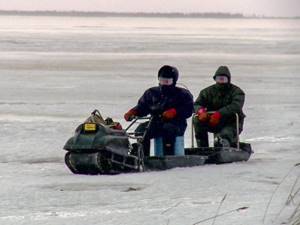
Meanwhile, stern guys were rushing past in vehicles of various calibers. For some reason, the trains attached to motorized dogs made me smile. These little Susanin men are sitting, hugging each other in a sled - well, it’s funny.
Dozens of sleds went into the lake, along with snowmobiles and cars, including cars and low-bellied ones. They all rushed to where the bags of fish were waiting for them - if not on the ice, then under it. Just manage to catch it.
Wherever they look When there was no one left on the shore, our sleepy fishermen finally got out of the car, yawned, pulled out the snowmobile and went to the holes. It was 8 am.
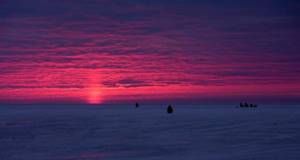
photo by Sergei Shikhutsky
They went to where there was no one. Let's go at random. And all around there is beauty - the lake and the sky are like milk, everything is one. The shores are not visible. Dream! Well, what does the fish have to do with it? Why are these people chasing her like this? These are roughly the thoughts that visited our heroes. We (it’s time to move on to the first-person narrative) quietly and sleepily continued to enjoy the natural grandeur.
But then someone “scratched” Andrey’s spoon. And then for me. I admit, we were waiting for the perch; the depth there was about seven meters. Well, then there was something for which fishermen travel to distant lands. It was like this:
In general, I got a burbot bite. I took a bait with maggots. A cry of delight and a moment of absolute happiness. It was 8:50 am. The steelyard showed 6.2 kg. This is a trophy!
Didn't go into the hole. Then there was a short photo session. And so we catch again. This time we switched to burbot tackle - we launched jigs with smelt. Within an hour, Andrei caught two small burbots, and I caught one.

Then there was a pause, the fish stopped biting. I approached Andrey and said that, to be honest, I don’t need any more fish today, I have enough. He stated that he didn’t need the fish at all – it was so beautiful!
At that very moment someone knocked on Andrei’s hand. This is where the fun began. The uninvited guest was not in the format of the 130th hole (this is the standard diameter of the hole).
- He doesn’t climb! “Andrey was calm and pleased with the beautiful views around, but this one didn’t climb, and this upset Andrey. He decided to take off his jacket and temporarily let him hold the underwater monster, which did not want to crawl into the hole. Good!
We began to think - what to do. To begin with, they broke my gaff. Then they bent Andryukhin. As a result, they somehow screwed up our friend. But what's the point? Even though he was on a leash, he didn’t go into the hole.
We took turns dipping our hands into the cold water, stroking the slippery muzzle, trying to lift it by the gills into the hole, persuading the fish to line up, but to no avail.
It was time to drill out. Since neither Andrey nor I had to drill before, we began to do it the way we know how.
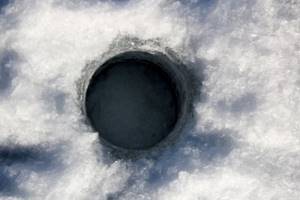
And again, failure - from two holes it turned out to be some kind of eight, and not one big hole. But the second hand began to crawl through. Now the two of us could stroke our sufferer at the same time.
After the third hole it became really sad. The fish don't come and that's it. “Couldn’t you have hooked it less?!” — that’s exactly how I encouraged Andrey. “Sorry, I didn’t mean to,” he answered guiltily. Half an hour has already passed.

And so we decided to make a desperate attempt to decide the outcome of the fight. The two of us grabbed this comrade by the gills and with a sharp movement nevertheless dragged him into the figure-eight hole. And again - a wild cry of victory over the “mammoth”! Dancing around the hole and complete boundless happiness.
This fish was close in length to the first one, but in thickness it was much larger. Not surprisingly, her weight eventually dropped by 11 kg.
At this point the fishing was done. The subsequent hours of riding to the Vologda coast and catching one perch don’t count.
It was a good hunt.
Vendace in Lake Onega
It is the main commercial fish and is found throughout the entire water area of Lake Onega. However, you should not look for it in small bays, as well as in areas where industrial wastewater is discharged (for example, in Kondopoga Bay). The vendace avoids such places. This fish has no other features; fishing is the same as in any other body of water.
Separately, it is worth noting the largest form of Onega vendace - kiltsa. Kilets is found in the southern part of Lake Onega. It is worth catching in the Murom and Sheltozero regions; it is rare in other parts of the reservoir. Prefers areas with a flat and muddy bottom.
We organize fishing on Lake Onega, trolling on an equipped Finnish boat
15,000 rubles fishing shift 8 hours
10,000 rubles 4x. hour shift.
The optimal number of fishermen is 3 people, maximum 5.
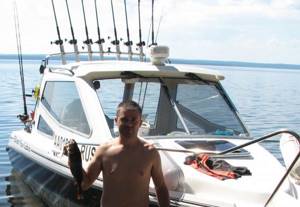
The price of fishing includes: boat rental, provision of gear (spinning rods with wobblers, gliders...), instructions, gasoline, huntsman captain and assistance in dissolving up to 12 spinning rods!
Our guests can expect to catch large Walleye, Pike and good sized Perch! You come across Salmon, you need to let him go!
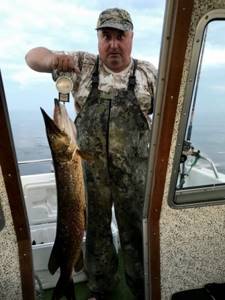
2018
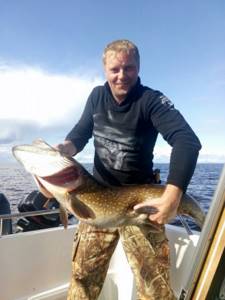
2019
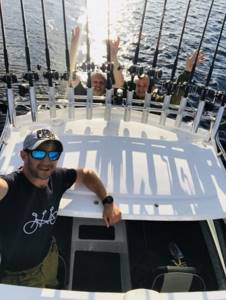
Some photo reports can be seen on the page of our VKontakte group (you can go to the group through the block at the bottom of the page).
Some photos of trophies are in the album of this site!
We provide rowing boats for independent fishing on Lake Onega (300 rubles/day), we do not provide motors (you can install your own motor up to 5 hp).
Guests of our base can come with their own boat or boat; there is a place to launch the boat.
You can successfully fish even from the shore or our pier!
We also deliver guests to KIZHI, 3000 rubles per person. Delivery details to Kizhi
Burbot in Lake Onega
There are two common forms of burbot in Lake Onega: lake-river and lake. Found throughout the entire water area, the Onega burbot is characterized by the usual habits of this fish. In summer it stays in deep places and can be found at depths of more than 70 meters. From the beginning of October it comes to shallower places, at which time it can be caught at depths not exceeding 6-7 meters.
The lake-river form of the Onega burbot differs only in its spawning location: it goes to spawn in rivers. Prefers the southern part of the lake.
Onega, weather forecast and fish bite
| Weather forecast and fish bite | Calendar, from 02/16/2021 to 02/19/2021 | ||||||||||||
| VT | SR | Thu | PT | ||||||||||
| Times of Day | Day | Evening | Night | Morning | Day | Evening | Night | Morning | Day | Evening | Night | Morning | |
| Cloudiness, precipitation | Mainly cloudy | Mainly cloudy | Mainly cloudy | Mainly cloudy | light snow | Mainly cloudy | Partly cloudy | Partly cloudy | Partly cloudy | Partly cloudy | light snow | light snow | |
| Temperature °C | -20 | -15 | -19 | -21 | -22 | -22 | -27 | -29 | -28 | -19 | -19 | -21 | |
| Pressure, mm. | 763 | 763 | 765 | 765 | 766 | 767 | 769 | 770 | 770 | 767 | 765 | 762 | |
| Direction, | South wind | East wind | Wind northeast | Wind northeast | North wind | North wind | Wind northeast | North wind | West wind | Wind southwest | West wind | West wind | |
| wind speed | 1 m/s | 1 m/s | 2 m/s | 2 m/s | 3 m/s | 3 m/s | 2 m/s | 1 m/s | 1 m/s | 3 m/s | 3 m/s | 2 m/s | |
| According to the forecast, the fish will bite on: live bait (jigs), winter spinners, balancers Pike | 75% | 50% | 10% | 60% | 60% | 50% | 0% | 45% | 60% | 50% | 25% | 75% | |
| According to the forecast, they will bite on: bloodworms, winter spoons, balance beams Perch | 65% | 40% | 0% | 50% | 50% | 40% | 0% | 55% | 70% | 60% | 0% | 65% | |
| According to the forecast, they will bite on: bloodworms, maggots, bark beetles, burdocks Dace | 50% | 25% | 20% | 35% | 35% | 25% | 30% | 45% | 60% | 50% | 35% | 50% | |
| According to the forecast, they will bite on: bloodworms, maggots, bark beetles, burdocks Ruff | 45% | 25% | 20% | 35% | 30% | 25% | 30% | 45% | 55% | 50% | 35% | 50% | |
| According to the forecast, the fish will bite on: bloodworms, spoons, balance beams Trout | 45% | 20% | 0% | 40% | 25% | 20% | 0% | 50% | 55% | 50% | 0% | 60% | |
| According to the forecast, they will bite on: bloodworms, oparish, spinners Grayling | 45% | 20% | 0% | 40% | 25% | 20% | 0% | 50% | 55% | 50% | 0% | 60% | |
| Bait: maggot, bloodworm Bream | 40% | 20% | 35% | 30% | 20% | 20% | 45% | 40% | 50% | 50% | 55% | 50% | |
| Bait: worm, live bait, spinner Burbot | 50% | 60% | 70% | 60% | 30% | 60% | 50% | 40% | 30% | 60% | 90% | 80% | |
| Bait: maggot, bloodworm Roach | 65% | 40% | 0% | 60% | 50% | 40% | 0% | 55% | 60% | 50% | 0% | 75% | |
| Bait: maggot, bloodworm, bark beetle Ide | 30% | 10% | 0% | 20% | 10% | 10% | 0% | 30% | 40% | 40% | 0% | 40% | |
The bite forecast will help you better choose a fishing day in January, February, March, April, May, June, July, August, September. October, November, December in the Onega region. You may also be interested in the bite forecast for all fish in the Arkhangelsk region, or fishing in Arkhangelsk.
Pike perch in Lake Onega
Pike perch is an important object not only for recreational fishing, but also for commercial fishing. The main spawning grounds are Chelmuzhskaya Bay and Pyalemskoe Onego. There are no behavioral peculiarities; it is found throughout Lake Onega. Its main food is smelt - it is worth choosing spinners that are similar to this fish. The catches most often include specimens from 500 grams to 2 kilograms; fishermen rarely catch larger specimens. Fishing for pike perch in Lake Onega is preferable in the northern and northeastern parts of the reservoir.
Winter fishing on Lake Onega and in summer
Lake Onega for fishing is an ideal choice for going fishing in Karelia, or just relaxing on the shore. For our guests we have prepared houses on the shore of the lake, which is the second largest freshwater body of water in Europe.
There are many attractions scattered along the shore and islands of Onega, and winter fishing on Lake Onega, and summer fishing too, is so unpredictable that passionate fishermen from all over Russia flock here.
Fishing in Karelia is an exciting event; you won’t notice how the whole day flies by. By evening, fatigue sets in that I didn’t feel while fishing. In such a situation, it is necessary that the rest conditions allow you to gain strength, dry your clothes if necessary, sort out your equipment, wash and get a good night’s sleep before the next day of fishing.
We ourselves love fishing, and we understand well what is needed for fishermen who love Lake Onega and fishing in Karelia. That is why houses were built on the shores of this tempting lake.
We are changing the idea of fishing when a man is forced to take time off, for example, in the winter to go fishing in Karelia . You can come to us with your wife and children and rent a house at a recreation center for fishing on the shores of Lake Onega. All houses are fully equipped (kitchen, shower and toilet in each house). The provided fishing boat allows the whole family to comfortably spend time on the water. We rent out houses only to couples and families, so that everyone on vacation can feel calm on the territory. We have a complete ban on noisy youth groups, a ban on corporate parties, weddings...
Bream in Lake Onega
Most often this fish can be found in the lips: Svyatukha, Velikaya, Orov, Chelmuzhskaya, Shalskaya. The largest bream lives in Chelmuzhskaya Bay. Bream weighing from 1 to 2 kilograms are most often caught in catches; larger individuals are less common. The bream in Lake Onega is characterized by all the typical habits that are inherent in this fish.
You can also look for bream in small and shallow lakes that are connected by rivers and channels to Lake Onega - in them it is found everywhere and in large quantities.
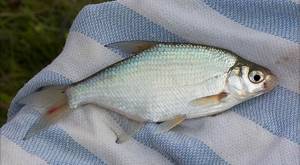
Salmon in Lake Onega
Salmon is most often found in the areas of Klimetskogo Island, Ropruchya and Brusno. It goes to spawn in almost all large rivers; in fact, it is divided according to the rivers in which it spawns. The most common is Shuya salmon, which reaches a weight of 10-11 kilograms. It is caught in Petrozavodsk Bay.
Pälem salmon is a smaller form; specimens weighing more than 5 kilograms are rarely found. Suna salmon is quite rare; if it is caught in the area of the mouth of the Suna River, then these are single specimens. To fish for salmon in Lake Onega, you must purchase a license.
Perch in Lake Onega
Found throughout the entire water area, no special features. It is most common in the northeastern part of the lake, where the largest specimens are caught. They are caught using float rods, spinning rods and other gear.
It is recommended to look for perch on underwater elevations, best if they are rocky. In summer you can fish at depths of up to 10 meters; in autumn it goes to deeper places (we’re talking about large specimens).
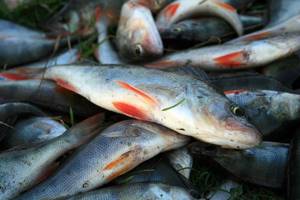
Fishing bases
In order to fish, you must buy a license. It can be purchased at a specialized store or at a fishing base.
Before setting off on your trip, call the fishing lodge to inquire about availability during your visit.
The most popular bases among tourists are:
- Wow.
- Onego club.
- Fisherman's pier.
- Silver Onega.
Oooh
Not far from Petrozavodsk, on the shoreline of Lake Onega, surrounded by pine trees, is the Uya recreation center. On its territory there are:
- several cottages designed for 4-6 guests;
- hotel buildings for 18 people with junior suites and standard rooms for 1-4 guests.
For those who like active pastime, we offer:
- Boats and bicycles in the summer season.
- Snowmobiles in winter.
The nature of Karelia is rich in a variety of mushrooms and berries, and is home to a large number of fish and game. For visitors to the base, the services of a cafe-bar with traditional Karelian cuisine are offered. Guests can visit the Russian bathhouse with a steam room and walkways leading to a pond.
Fishing here is carried out in various types:
- Trolling from a boat.
- On the float.
- For spinning tackle.
You can use the services of an instructor when renting a boat to ensure a large catch of trophy fish.
Onego-club
The base is located in the village of Kvartsitny in the Prionezhsky region of Karelia. On its territory you can relax both for those who like fishing and for those who want to enjoy the local beauty. Here you can relax with your family, friends, anyone will find entertainment and will be satisfied.
How to catch more fish?
I have been active fishing for quite some time and have found many ways to improve the bite. And here are the most effective:
- Bite activator. Attracts fish in cold and warm water with the help of pheromones included in the composition and stimulates its appetite. It’s a pity that Rosprirodnadzor wants to impose a ban on its sale.
- More sensitive gear. Reviews and instructions for other types of gear can be found on the pages of my website.
- Lures using pheromones.
You can get the rest of the secrets of successful fishing for free by reading our other articles on the site.
Guests of the tourist base can accommodate:
- in guest houses built in Russian rustic style;
- at a hotel on the lake.
Each room has:
- TV.
- Shower cabin.
- Toilet.
The cozy rooms can accommodate 1-4 people. The water in the camp site is ecologically clean, which is confirmed by certificates; it does not need to be boiled. Cooking is not difficult because you have all the necessary equipment:
- fridge;
- microwave;
- plate;
- kitchen utensils.
On the hotel premises you can use the barbecue and smokehouse.
The hotel is located in a pine forest near the lake. You can arrive here by private car and leave it in the illuminated parking lot. In addition to the listed amenities, guests can visit:
- A cozy gazebo.
- Mooring for boats.
- Sand beach.
- Bath.
Fisherman's Wharf
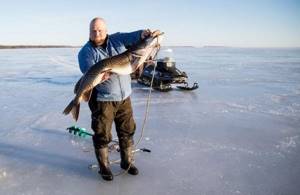
The base is located close to the Shuya salmon herd on Lake Onega. Guests can relax in North Karelia and return home with good impressions. The guest house is very comfortable, located on the shores of one of the largest fresh seas, and beautiful places and a large fish population attract many tourists here.
On the territory of the base you can fish by trolling. In this way you can catch:
- salmon;
- pike.
You can rent:
- Boats of various capacities, equipped with life jackets and echo sounders.
- Navigators.
- Radio stations.
- Fishing equipment.
Perch species can be caught:
- on a float rod;
- on a spinner.
Grayling can be caught with a fly.
You can get help from an experienced fishing instructor who knows the nuances of local species of salmon, pike and other fish and can accompany guests throughout the holiday.
Those who love winter fishing are provided with a cozy house close to the fishing spot. Rooms for 1-3 people are equipped with everything necessary for a comfortable stay:
- Kitchen.
- Shower.
- TV.
- Barbecue.
- Smokehouse.
Trout in Lake Onega
Trout is found almost everywhere (lake form). It is mainly caught using spinning rods. Onega trout is characterized by habits inherent in this fish and any other bodies of water. Fishes weighing more than 4.5 kilograms are rarely caught, although occasionally successful fishermen manage to catch fish weighing more than 8 kg. There are also rainbow trout that were bred artificially, but they were able to escape from the cages and spread throughout the lake.
The best places for trout fishing in Lake Onega: Shalskaya Bay, Brusno Island, river mouths. It is in these locations that this fish is found most often.
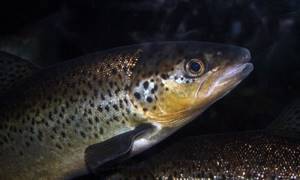
Grayling in Lake Onega
Grayling is not found everywhere, but this fish is quite widespread. It is worth looking in Maly Onega, near the Bolshoi Klimetskoy Island, in Pyalemsky Onega and near the Ivanovo Islands. Usually you come across individuals weighing from 400 to 500 grams. Also, do not forget about the small rivers that flow into Lake Onega. This is where the favorite habitats of grayling are.
We talked about the main types of fish in Lake Onega. Unfortunately, it is not possible to tell in detail about each fish, but experienced fishermen will always find their prey in this body of water. If you are very lucky, you can even catch a catfish or an eel, which are very, very rare here.
After reading other articles in the “Lake Onega” section, you can choose a good place for fishing, the main thing is to know what kind of fish you are going for and its habits. In this case, excellent fishing is guaranteed to you. Of course, if you're lucky with the weather.
Fishing in Karelia in winter
0
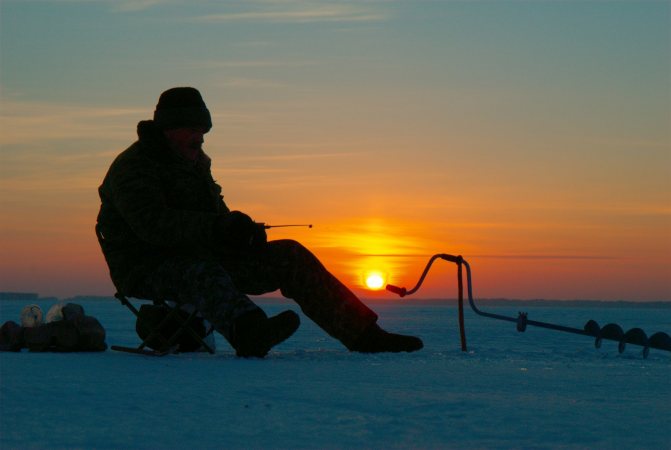
Fishing in Karelia in winter
Ice fishing is one of the few winter pleasures that many people deprive themselves of due to fear of the cold and the unknown. After all, sitting at home you can hardly experience the whole storm of positive emotions from entertainment that you have not yet gone through.
In recent years, there has been a tendency for a stagnant autumn and a late start to winter. But all the fishermen are impatiently waiting for this moment. After the first well-frosted days, small small lakes begin to burst with fishermen. Here, as a rule, you need to show all your accumulated skills in order to catch something. Fish during this period are very picky. And in order to get close to its refined taste, you need a little patience to try gear and bait and find one that is suitable for the given fish of this reservoir. I felt this especially acutely on the last fishing trip in November, when we arrived at a small lambushka and tried to catch small fish, which were simply teeming there. This could be seen just by looking into the hole. But a large number of fishermen all over the lake sat motionless. Except for one, actively pulling out small fish from the hole, which after half an hour was drilled from all sides. But this had no effect on his bite and the lack of bite among others. The whole secret, of course, turned out to be a well-chosen jig and bait. The main fisherman of this lake had a lead jig with a red eye, which he took a long time to pick up for this lake. The bait was maggot. Most of the fishermen came with bloodworms. Therefore, the conclusion is that a lot depends on the gear. Karelia especially attracts experienced fishermen who rush to their favorite reservoirs for good and tasty fish. Fishing in Karelia in winter is a very popular activity, not only among visiting fishermen. The local population simply loves this business. Every winter fishing enthusiast has his own successful fishing spots, favorite reservoirs or rivers. Not only men fish, but there are also many women fisherwomen; children also do not want to lag behind their parents, and are happy to fish with them. Karelian reservoirs are so rich in fish that even the most inexperienced fisherman will not be left without his catch. And the aromatic fish soup will be an excellent reward for the fisherman’s efforts.
Fishing on the ice of the river.
The longest river is the Suna. It attracts lovers of winter fishing with the abundance of its fish resources. The river is home to burbot, toothy pike, large roach, bream, pike perch, vendace, striped perch, and dace. Recently, trout have appeared that escaped from fish farms. In winter, the predator on the Suna is caught with baits, baits or spoons from the ice. Successful fishing for predatory fish occurs in unclear weather when there is light snow. In the warm season, timber is rafted along the river, and at the bottom there are many sunken logs and snags. You need to be careful not to damage your gear.
Keret is a northern river with unique banks. When it flows into the White Sea, it forms many islands, they strongly attract fishermen. Striped perch, pike, ruffe, grayling, and burbot are caught in the river. Dace and whitefish are often found. The fish caught are very large: pike about twelve kilograms, and perch more than a kilogram. One of the optimal gear on Kereti is a spinning rod. But you can also fish with a winter fishing rod, tackle with a jig, a worm, a moth or maggots.
There are also good places for winter fishing on the Pistajoki River. You can fish with a spinning rod or a winter fishing rod. A variety of baits are used. There are different types of fish in Pistajoki. The river topography is very favorable for the existence of ide, predatory pike, burbot, dace, grayling, river trout, vendace, brown trout, and perch. The fish lives well in the river. The abundance of local food contributes to the rapid growth of fish. It happens that the fish gets very full and does not respond to the bait. Fishing in Pistajoki is only licensed.
Winter fishing on the lake.
Fishing on Lake Onega, the largest and cleanest lake in Karelia, is almost always a good choice. The lake gradually becomes covered with ice, and by January the lake freezes completely. The reservoir is home to about forty-seven representatives of the aquatic world. A lot of fish attract the most avid fishermen to the lake. In the lake there is a chance to catch salmon, golden crucian carp, toothy pike, spiny ruff, trout, burbot and many other fish. The depth of Lake Onega sometimes reaches thirty meters; this is an excellent place for the life of some species of fish.
Fishing in Karelia in winter on Lake Onega is very popular. They mainly catch burbot in winter on the lake. Burbot loves deep water and actively bites on any bait. If you are lucky, you can catch a large perch in the lake. It bites both on modern fishing devices and on a worm or bloodworm. Burbot fish soup is simply delicious, and perch is considered a delicacy.
Vodlozero is a large body of water with one hundred and ninety-six islands on its water surface. The shores of the islands are densely overgrown with reeds. In winter there are a lot of fishermen near the islands. There are about two dozen species of fish in the lake. They successfully catch pike perch, whitefish, bream, smelt, vendace, ide, pike, and roach. Ice fishing in Vodlozero starts from mid-November to early May.
Many winter fishing enthusiasts prefer Lake Ladoga. This large freshwater lake is very rich in fish, there are about fifty-three species. In these reservoirs they catch roach, pike perch, vendace, bream, catfish, salmon, trout, grayling...
There are sturgeon and Volkhov whitefish, but there are very few of them and they are protected by law. The best places for fishing are on the southern side of the lake, where the depth is up to fifteen, twenty meters. The northern side is not a very good option, since it is an area with skerries. They catch fish with winter gear. Spinning rods for vertical trolling, tackle with a jig, a girder or a stand are suitable.
The best months for fishing.
Winter in Karelia is often frosty and cold. It is best to fish in winter in southern Karelia. The ice freezes just as hard, but the frost is not so severe. With the onset of the first ice, active fishing begins. From November to the second half of January is the best time. Since mid-January, fishing is no longer so good. The ice becomes thicker, visibility under the ice deteriorates, and the fish at this time lie on the bottom and hardly eat food. Fishing on rivers at this time of year will not bring a generous catch. It’s better to try your luck on open large lakes, where you can catch an angry pike from the depths with a spoon or a girder. In the dead of winter you can also catch white fish, but in order to catch it, you need to feed it well. And the Karelian chub can be caught using ordinary lard, he loves it very much.
February is not a very good time for winter fishing. In the north of the region there are severe frosts. In the south they are not so strong, but they also do not allow you to stay on the ice for a long time. The ice becomes so thick that it is difficult to drill through it and make a hole. The fish are almost all at the bottom and don’t want to eat the bait. But at the end of February and beginning of March, the fish seem to wake up and begin to actively feed. Then there is a chance of a good catch.
Hospitable Karelia will always welcome all lovers of winter fishing. The generous region will share its fish wealth with everyone, and will not leave anyone without catch. And the moments of unique fishing in Karelia in winter will always be remembered with a warm feeling. And the desire will arise to come to this rich northern region many, many times
Winter fishing offer option: Fishing on snowmobiles on Lake Syamozero / 3 days / additional visit to the Zoo complex
Snowmobile trip with fishing on Syamozero / 2 days / 1 day trip, 1 day fishing

